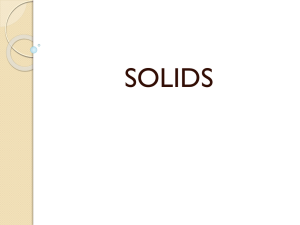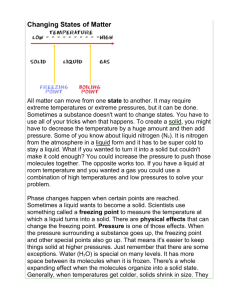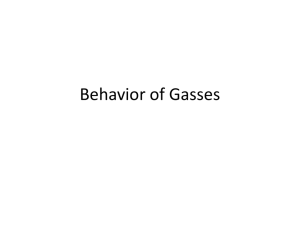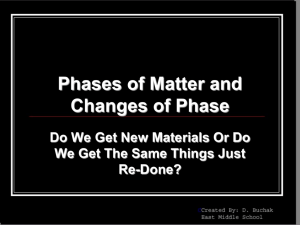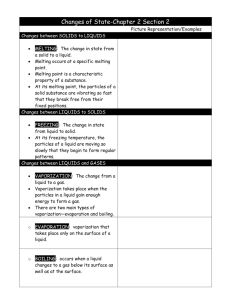liquid
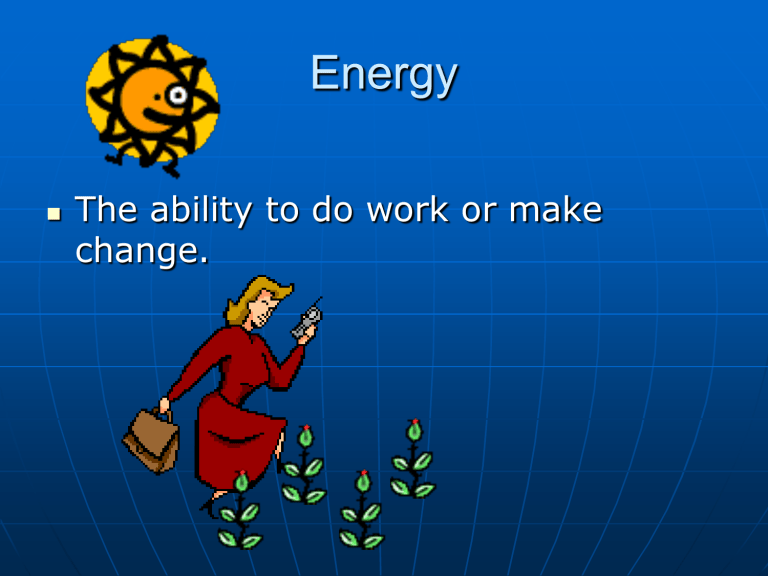
Energy
The ability to do work or make change.
Temperature
Is the measure of the average kinetic energy of particles of matter.
• We measure temperature in Celsius (˚c)
Freezing point of water- 0˚c
Boiling point of water- 100˚c
• Kinetic Energy- is the energy of motion.
It is the motion of waves, electrons, atoms, molecules, substances, and objects.
Thermal Energy
Thermal energy is the internal energy in substances.
• Also known as heat or radiant energy.
• It is the vibration and movement of the atoms and molecules within substances.
• The more thermal energy in a substance, the faster the atoms and molecules vibrate and move.
Four States of Matter
The physical forms in which a substance can exist
•Solid
•Liquid
•Gas
•Plasma
Solid State
Solids have a definite shape and volume
• Particles of the substance are very close together
• Two types of solids:
Crystalline
Amorphous
Crystalline Solids
Crystalline solids have a very orderly, three-dimensional arrangement of atoms or molecules. Particles repeat in patterns or rows
Example: diamonds, salt ,sugar
Amorphous Solids
Amorphous solid are arranged randomly.
Each particle is in a particular spot,
but the particles are in no particular pattern.
Example: tires, rubber, wax
Liquids
Do not have a definite shape but do have a definite volume.
• Liquids take the shape of their container.
• Molecules in liquid move fast by each other, and are close to each other
Liquid Properties
Surface Tension is the result of an inward pull among molecules that beings the molecules on the surface closer together.
Ex: beads of water on a car or leaf, bugs walking on water.
Viscosity a liquids resistance to flowing.
• Depends on size, shape, and attraction of particles.
Gas State
Do not have a definite shape or volume
• In a gas there are empty spaces between particles.
• Gas molecules-
move fast enough to break away from each other.
have less attraction between them.
Plasma
Plasma is a gas like state of matter consisting of a mixture of free electrons and atoms that are stripped of their electrons (ionized).
Where is Plasma? Both ordinary and exotic places!
• When an electric current is passed through neon gas, it produces both plasma and light. Also in fluorescent lights.
• Lightning is a massive electrical discharge in the atmosphere that creates a jagged column of plasma.
• Part of a comet's streaming tail is plasma from gas ionized by sunlight and other unknown processes.
• The Sun is a 1.5-million-kilometer ball of plasma, heated by nuclear fusion
Phase Change
A phase change occurs when matter changes from one state to another.
This is a physical change.
Sublimation
Vaporization/ condensation
Melting/ freezing
Thermal Changes in Matter
Endothermic Change, a change in which energy is taken in.
• Example: The melting of ice, Ice packs
Exothermic Change, a change in which energy is released.
• Example: A burning fire, Calcium
Chloride & H
2
O
Melting
Is the change of state from a solid to a liquid.
The melting point of a substance is the point at which the substance changes from a solid to a liquid.
Melting pts. of substances vary.
Melting pts. can be used to identify a substance, it is a property of matter
Melting is a endothermic change
• Heat energy is absorbed, or taken in.
Freezing
Freezing is the change of
state from a liquid to a solid.
Freezing is the reverse process of melting. SO, freezing and melting occur at the same temperature.
Freezing is exothermic change .
• Heat energy is removed or taken out.
Vaporization
Is a change from liquid to gas
Boiling is vaporization that occurs throughout the liquid.
• Boiling pt. is a physical property of matter
• When a liquids becomes a gas the atoms spread apart.
• Pressure affects boiling points
Evaporation is vaporization that occurs at the surface of the liquid.
- Evaporation point is below boiling pt.
Condensation
Condensation is the change of state from a gas to a liquid.
Condensation Point: The temperature at which the gas becomes a liquid at a given pressure.
When a gas becomes a liquid atom clump together.
Condensation is Exothermic
Sublimation
Is a change from a solid state directly to a gas state.
• Ex: Dry Ice
